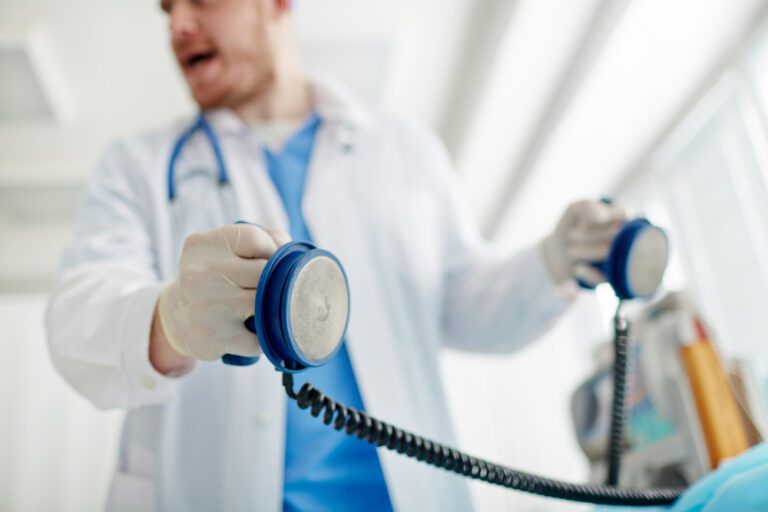
[ad_1]

For most of history, humans had no idea what happens when you die. Death was, as Hamlet put it, an “undiscovered country from whose bourn no traveler returns.” But with the advent of cardiopulmonary resuscitation (CPR), people are returning, at least from the borders of that country, with tales to tell.
What Do People See When They Die?
The accounts of people who have had what are popularly known as neath death experiences (NDE) are remarkably similar: the presence of a glowing white figure, a sense of peace and tranquility, cameos by deceased family members, out-of-body experiences, and memories from life, including what some call “life reviews.”
Not all reports are pleasant, however. Some returning travelers report feeling terror, isolation, and pain. These descriptions of NDEs have caused wild speculation and include claims of proof of life after death.
Near-Death Experience Research
They’ve also attracted the interest of serious scientists, such as Sam Parnia. As director of research into cardiopulmonary resuscitation at the New York University School of Medicine and director of The Human Consciousness Project at the University of Southampton in the U.K., Parnia has been working for years to test the validity of these claims.
AWARE Study
From 2008 to 2012, he was the lead investigator on the AWARE study, a research project that examined memories and awareness during cardiac arrest.
Evaluating Out-of-Body Experiences
The AWARE study evaluated patients’ descriptions of NDEs using objective markers, such as verifying out-of-body experiences. Researchers would place objects on high shelves to see if patients who recalled floating near the ceiling could identify the objects on the shelves.
AWARE II Study
Recently, Parnia and colleagues published the results of AWARE-II, a multi-center, multi-national (U.S. and U.K.) study of 567 cardiac arrest patients. The new study examined the biomarkers of consciousness during cardiac arrest and CPR.
Detecting Signs of Consciousness
The results from the first study were equivocal. However, the second study found clear electrical signals — brain signatures typically associated with consciousness like delta, theta, alpha, and beta rhythms — behind these NDEs. This shows, the researchers say, that during cardiac arrest, even when there are no detectable signs of consciousness, patients may have awareness and cognitive experiences.
Read More: Your Body, the First 5 Minutes After You Die
What Did the Cardiac Arrest Survivors Experience?
In AWARE-II, researchers also questioned survivors about what they experienced while in cardiac arrest, which Parnia prefers to call Recalled Experience of Death (RED). The survivors reported many of the typical experiences of people who’ve had NDEs.
Tranquility and Peace
One person, for example, said, “I remember entering a […] tunnel. The feelings I experienced […] were much more intense than [usual]. The first feeling was a feeling of intense peace. It was so calm and serene with an incredible amount of tranquility. All of my […] worries, thoughts, fears, and opinions were gone.
The intensity of the tranquility was so incredible and overwhelming that there was no fear in what I was experiencing. I had no fear about where I was going and what to expect when I arrived there. Then I felt warmth […]. Then there was the desire to be home.”
Read More: Analyzing Brain Waves for Near-Death Experiences
What Causes a Near Death Experience?
There are many explanations for these kinds of experiences that do not require belief in an afterlife, mystical experiences, or other dimensions.
Brain Similarities
John Martin Fischer, a philosopher at the University of California, Riverside and co-author of Near-Death Experiences, said that the seemingly uncanny similarities in the experiences of people who’ve come close to death could be a result of the similarities in human brains and psychologies. And Kevin Nelson, a neurologist at the University of Kentucky Medical Center, pointed out that fainting can cause similar experiences.
Still, the results of AWARE-II certainly add to the already growing evidence that consciousness can exist even when it is clinically undetectable and question the belief that the brain dies after five to 10 minutes of oxygen deprivation. This may not tell us much about the afterlife, but could, Parnia explained, help in developing new treatments to preserve the brain and bring people back to life with full consciousness.
Read More: Can Science Explain Near Death Experiences?
[ad_2]